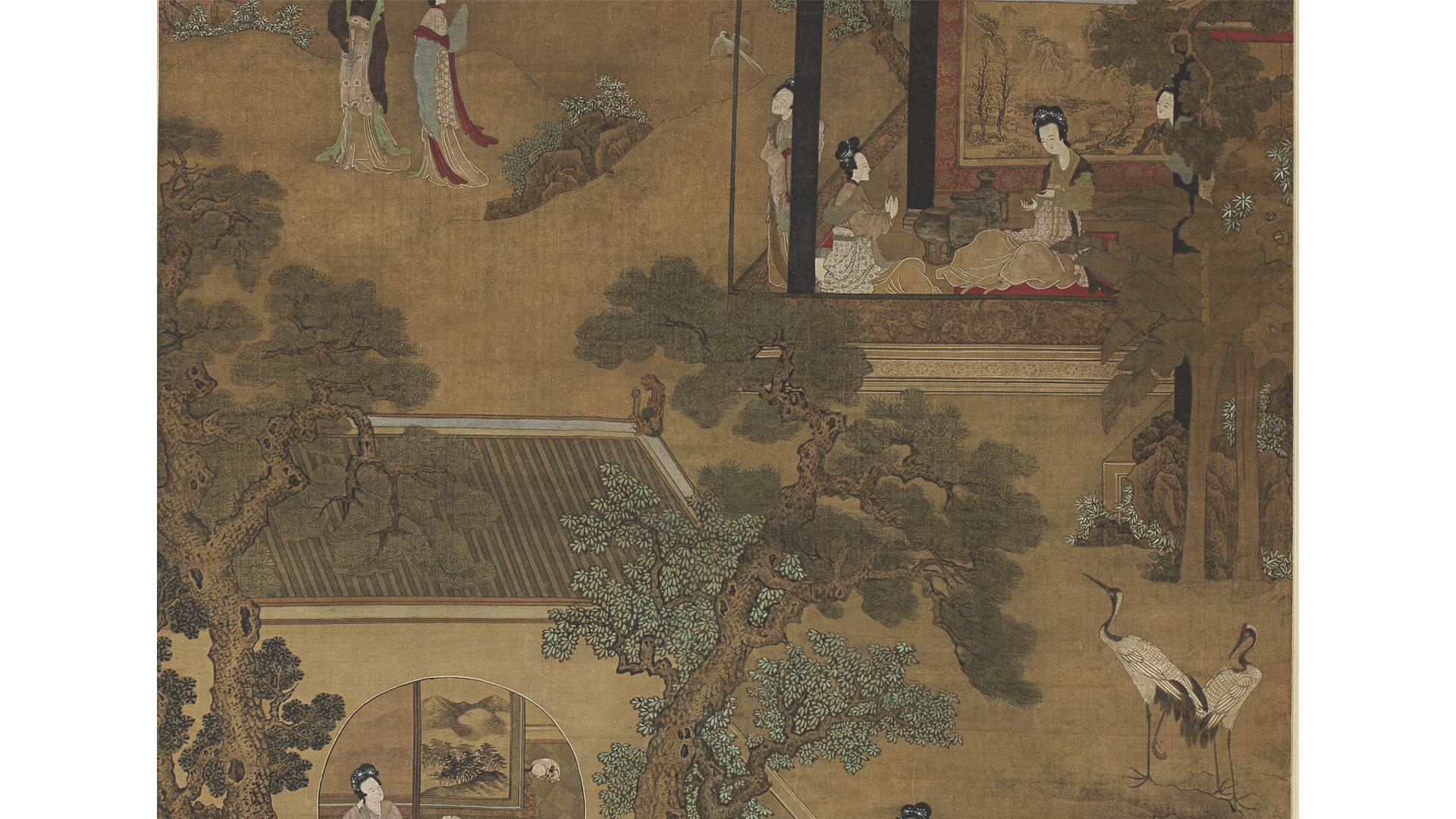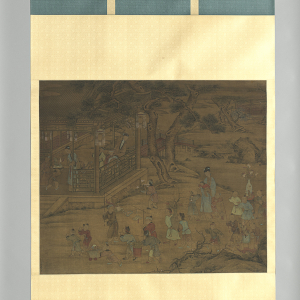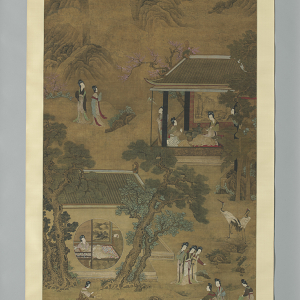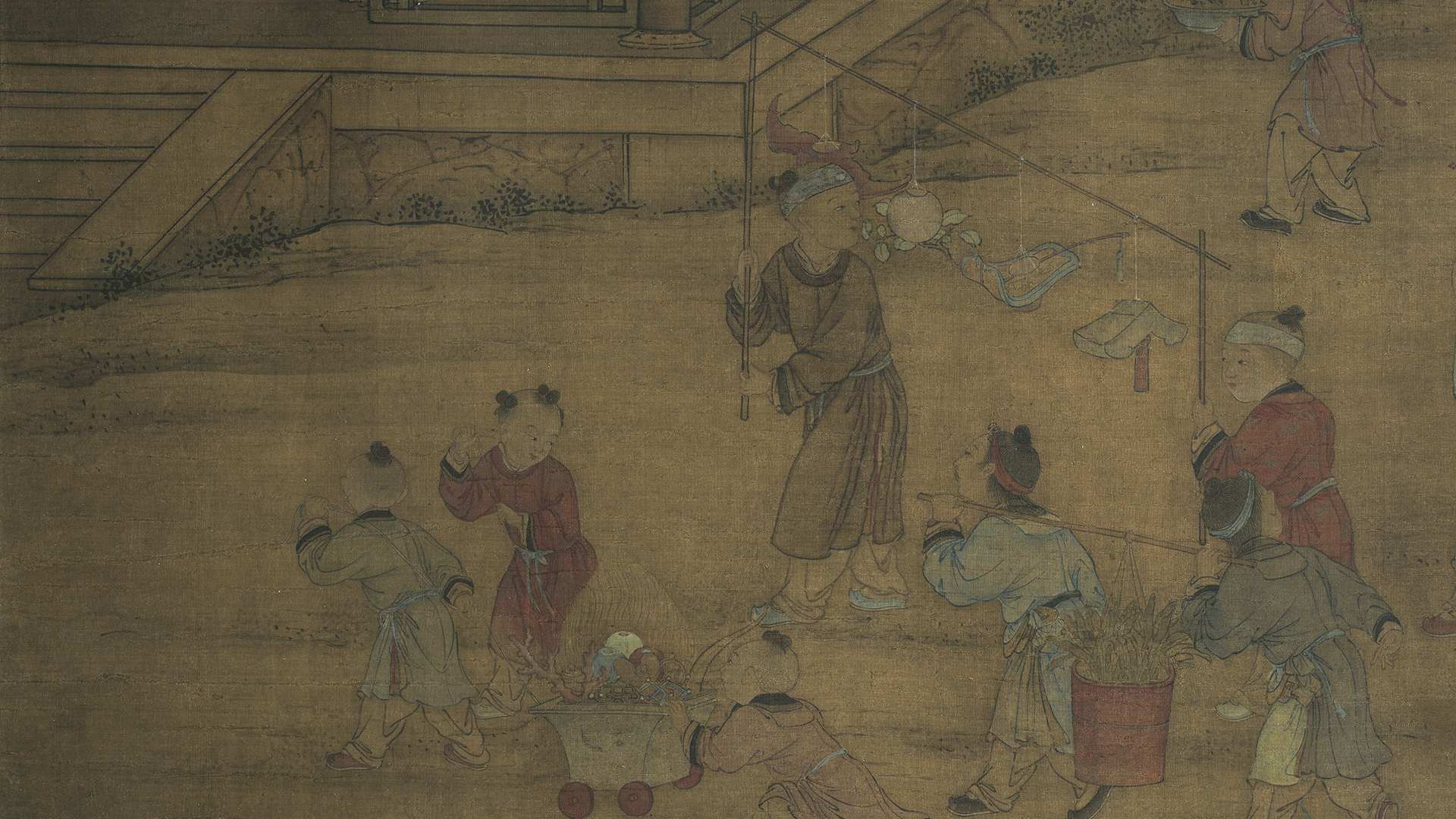The conservation of two ancient Chinese scroll paintings
Two large Chinese scroll paintings recently returned to the ROM after a two-year treatment at a private conservation studio in the United States. The painting Ladies in the Garden is filled with intricate details and executed in refined brushwork. Its poor condition of broken silk, creases, and scattered red mould, however, has prevented it from the public display since it entered the ROM collection in the early 1920s.
It carries no artist’s signature but an old attribution attached it to the renowned 16th-century painter Qiu Ying, whose paintings of elegant palace ladies were highly priced and in great demand among high society.
Ladies in the Garden shows a landscaped, palace-like garden and an inner chamber space. A group of 14 women are seen enjoying themselves as they partake in various leisure activities such as fishing, birding, viewing flowers, appreciating antiques, and even napping. These ladies are attired in colorful, embroidered robes and colourful ribbons with ornate hairstyles. The women carry Qiu Ying’s trademark styles of feminine beauty—they are delicate and elegant, with slender body types. This painting originally would have been a hanging that decorated the chamber of an affluent household of the merchant or elite class during the late Imperial China (16th to 17th centuries).
The second painting, Lantern Festival, also came to ROM in the 1920s and illustrates the lantern festival during the Chinese New Year. The painting must have been exposed to constant light, resulting in deeply darkened silk surface and color fading—the blue pigments particularly.
The painting depicts a palatial courtyard where court ladies are featured alongside children who carry artistic lanterns in various shapes and other precious items that bear auspicious symbols.
The artist’s signature, Chen Ji, can be seen on the lower left corner of the painting. Chen was a court painter during the Emperor Qianlong reign in the Qing dynasty, which dates the painting to the 18th century. The painting might have been originally pasted onto wall or framed as a screen to decorate the chamber in the inner court of the imperial household. The depiction of many boys, some in princely dresses, expresses the wish for a prosperous family line passed down by male descendants.
Fortunately, the Chinese painting conservation treatment—a more than thousand-year-old technique—brought these paintings back to life. A balance between conserving and restoring was carefully determined in the treatment process of these paintings. For instance, the conservator used the inpainting technique to subtly restore the blue colors of clothing featured in Lantern Festival in order to reflect a certain degree of aging. Chemicals used to wash off red molds were used moderately in Ladies in the Garden to avoid unknown future affects. The public now can enjoy a full reveal of these two paintings to get a sense of what the paintings looked like prior to and after conservation.
A more than thousand-year-old technique of Chinese painting conservation brought these artworks back to life.
The conservation of the two paintings is generously supported by the Elizabeth Rhind Fund for Collections Care and the ROM Chinese Painting Conservation Fund. Special thanks go to the Bishop White Committee’s effort of fundraising for the Chinese Painting Conservation Project.




